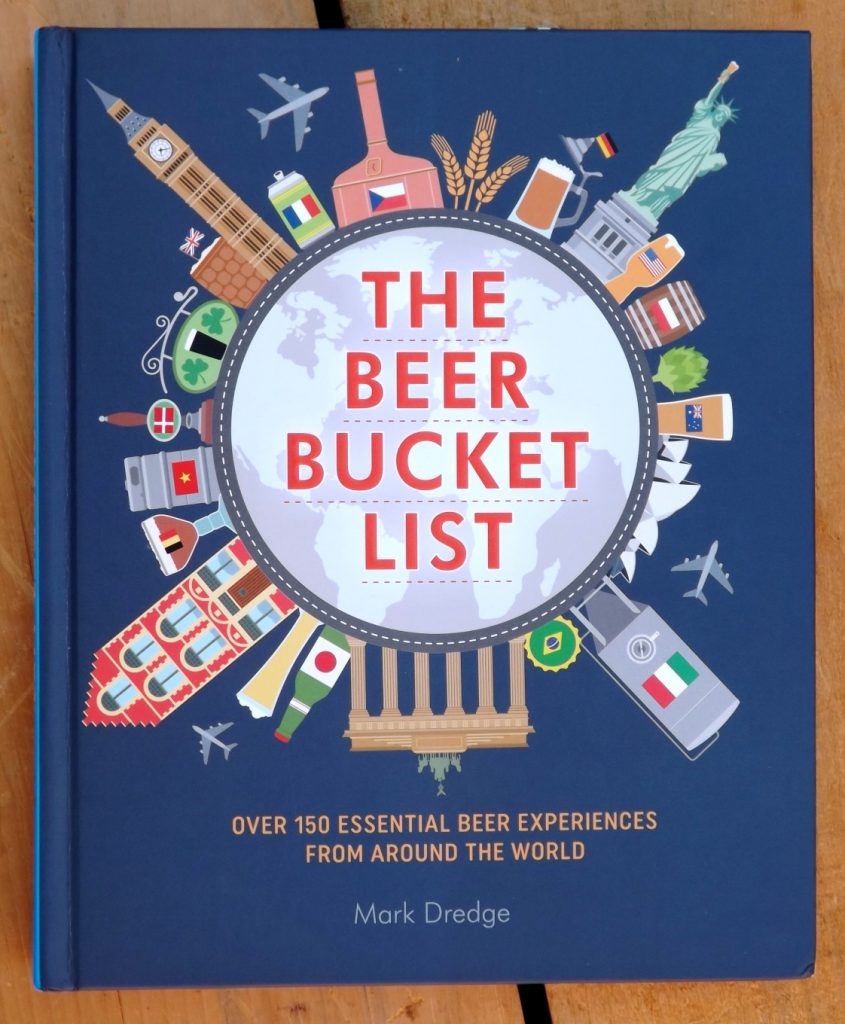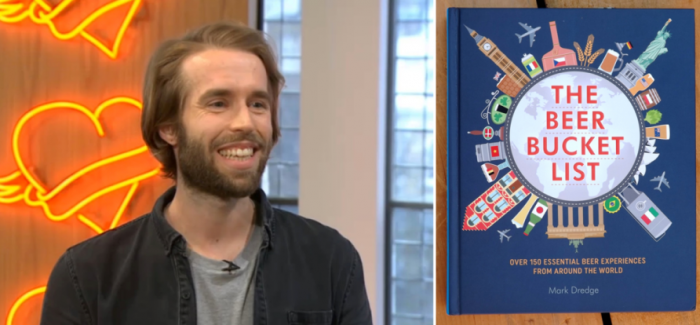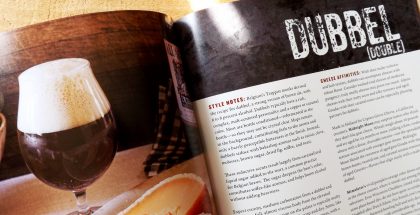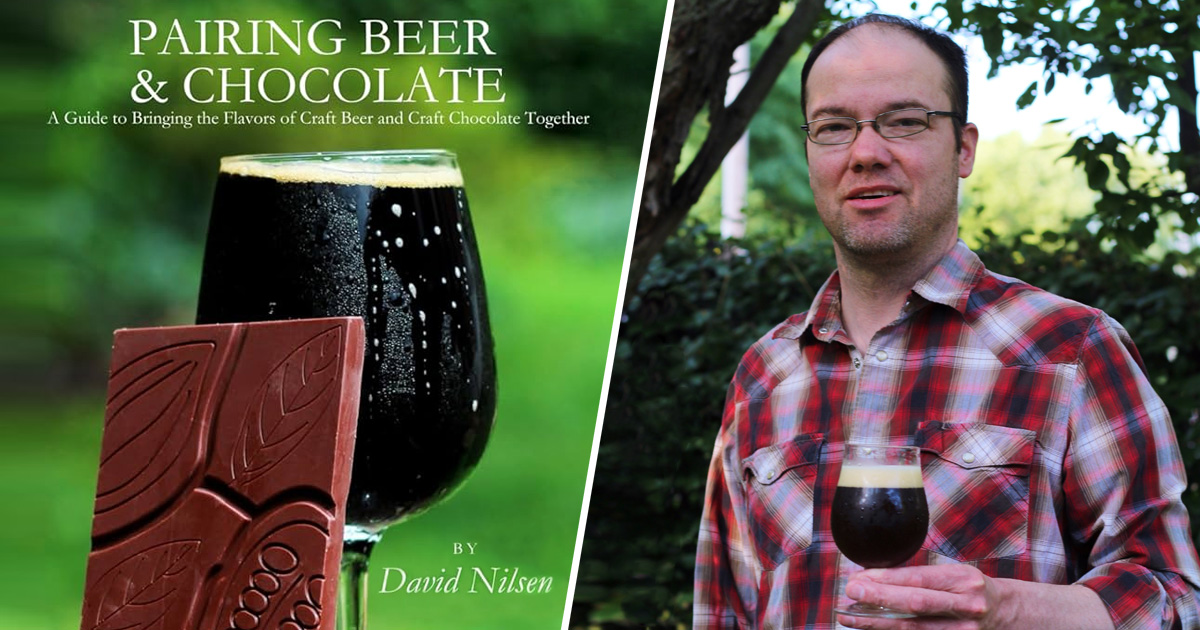Book Review & Interview | The Beer Bucket List
If you’re reading PorchDrinking, chances are you have a list in your head of breweries you really want to visit, distant cities rich in brewing tradition you want to travel to, and rare beers you have to taste before you die. British beer writer Mark Dredge started writing down his own such list a few years ago, and then decided to tick as many items off that list as he could and write a book about it.
The Beer Bucket List: Over 150 Essential Beer Experiences from Around the World by Mark Dredge (Dog ‘n’ Bone Books, 2018)
Mark is an enthusiastic beer writer, and his genuine excitement at getting to visit so many wonderful breweries, bars, and other beer destinations is infectious. Where many beer authors can come across as a bit too cool for school, Mark gives the impression that he’d love to share a pint with you in any of the locations he writes about. And those locations are an eclectic group.

The experiences in The Beer Bucket List are divided by continent, and the North American destinations range from large, established first-generation craft breweries like Sierra Nevada to trendy newer brewpubs like Chicago’s Band of Bohemia. He highlights great beer cities like Grand Rapids, MI, and Asheville, NC, and also exposes a few unexpected experiences like visiting White Labs in San Diego, CA, where you can taste a flight of identical beers fermented with different yeast strains.
The list of destinations in Europe and the British Isles are as rich and as storied as you can imagine, but I was particularly interested in Mark’s recommendations for Asia, Africa, and Oceania, areas we might not typically think of as having great beer. Craft beer is truly global now, however, and many of the destinations Mark mentions from these regions are going on my own personal beer bucket list.
I recently had the chance to talk to Mark about The Beer Bucket List, the global evolution of craft beer, and the destinations Mark still has to tick off his own list of essential beer experiences.
PorchDrinking: How did the idea for The Beer Bucket List come about?
Mark Dredge: I was thinking, “What are the breweries in the world I want to get to? Which ones would I say are the top 2 or 3 or 10?” That got me thinking of my bucket list of beer. The first brewery that popped into my head was Dogfish Head. When I first got into beer about ten years ago, they were right at the forefront of craft beer at that point, and I’d never been there. I loved the idea there were others as well. I sat there making a list of all the places I wanted to go, and then actually thinking about all the most important places I’d already been.

This book seems to follow a similar trajectory as The Best Beer in the World, which you wrote a couple years ago. Did you piggy-back this project on top of that one?
Sort of. They were definitely separate ideas. I guess the idea that you go in search of the best beer in the world and then you go in search of all the best places to drink it in the world, and they certainly overlap quite a lot. With the bucket list, I was hoping to get smaller, niche places that people know less about, rather than going into longer stories about some of the more famous breweries.
You haven’t been able to go to everywhere on your list yet. Of the items you still have to tick off, which do you feel are the priorities for you?
Suarez Family Brewing was way up on that list, and I tried to get there last year when I was doing research for this book. I actually got to go a couple months ago, so that was cool. They were a modern brewery that very much appealed to me. Otherwise, it’s going to be more odd things, like drinking chicha in Peru. Things that are more challenging travel, trying to understand culture more. This list grows all the time. Every time I read a new article about a new country or place, I’m just like, “Man, I really want to go there as well.”
One of the things I’ve enjoyed in your book as well as several others over the past few years is that the global craft beer scene is taking off, but it’s not just Europe and North America anymore. Which non-European-based beer scenes from Asia or Africa or South America should we prioritize for taking beer trips to check out those scenes?
For me, the most exciting and interesting is Vietnam. It’s brilliant because its got its own beer culture. A lot of these new places don’t necessarily have an embedded beer culture. They don’t have this hundred-year-old or more culture of just drinking beer together. Vietnam certainly has that, and the way they drink beer there is really unique. But they’ve also got this very modern surge of craft beer and craft bars. It’s just exciting. We’re at this point where craft beer is everywhere in the Western world. We’ve seen it evolve, but we haven’t seen it be born. In Vietnam, we’re seeing how a contemporary craft beer scene is being born and developed. That, to me, is really uniquely exciting.
As a British person, you’ve got a country with hundreds of years of beer culture and pub culture. What is your perspective on a young upstart like the United States? Beer has been brewed here for a long time, but the idea of good, flavorful beer is relatively new. How do you look at the American craft beer scene that is kind of leading the way right now globally?
I travel to the U.S. quite a lot. I was there for just over three weeks a few months ago. It’s exciting. It’s continually exciting to me. When I first got into beer, after that first year or so of excitement and drinking everything I could at home, that next step of excitement was to look to the U.S. To me, the U.S. has always been the place where the more interesting or innovative beer I couldn’t drink every day was coming from. Now, it’s almost gone too far for me. Most of the things I see in the U.S. now, it’s more nonsense. Beers I don’t actually want to drink. All these silly hazy IPAs, glitter beer, flavored beers, colorful beers. When I travel there now, I tend to just stick to my favorite beers, or beers I know are going to be really, really good, rather than trying to find out these odd little beers that are being brewed on this really small scale for god knows what reason. The craft beer market at the moment is very interesting, because it is still young, and it is still growing up and outwards. No one knows where it’s going, and no one is leading it in a certain direction. It’s sort of freewheeling. Some of it is exceptional, but some of it is going off in crazy directions.
A lot of us agree with you on that over here. I’m kind of over these new trends. I wish we could just brew good beer.
I’m with you on that. I always want to try different beers, and the only thing that I really care about in a beer is balance. Whether it’s 2% [ABV] or 12%, it still has to be balanced, and have drinkability, and have the characteristics of actual beer. So much of this now doesn’t have that. It’s appealing to a market that doesn’t really like the taste of beer.
I think it’s drawing in a whole new group of people who are getting interested in beer and this is their only experience of it. I wonder if we’re not going to see a split at some point between conventional craft beer and this new stuff that is still technically beer, but not… quite, you know?
Yeah, and I’m interested by how many people are going to be put off by the inconsistency. If you walk into a bar and order an IPA, how do you actually know what that IPA is going to taste like now? An IPA is the flagship beer, it’s the beer people order without actually thinking. How do you know if it’s going to be sweet or fruity or bitter or resinous? I wonder how many people are going to be turned off by that and go back to drinking mainstream beers because there is safety and consistency in those.

If you’re telling your friends in England one American beer experience and one American beer they have to try, what would that be?
Sierra Nevada in Chico is an amazing place to go, and it’s important because it’s one of the original craft breweries. That’s definitely a high priority beer and experience to do. As far as an individual beer, I think you have to go with an IPA. Sierra Nevada Pale Ale stands out as being that beer. For me, I love my IPAs to be bitter and dry, so I would say to these people who are being flamboyant about hazy IPAs to try something that is bright and bitter and clean and dry.
Let’s turn that around then. If you’re going to let American readers know about one British experience or beer, what would that be?
In the book, in the top ten for the bucket list, I included the Burton Union system at Marston Brewery. I think that’s definitely something that’s fascinating, because it reveals a way that beer was made a long time ago that is now the only place that is actually still making it that same way. Firestone Walker has a union system, but it works in a different way. This is something that is really unique to Burton and to Marston’s with their Pedigree Pale Ale. Just to see this system work in itself is remarkable. Also, just visit Burton. If you speak to a brewer and ask about the most historically important brewing cities, you’re going to hear Prague, Munich, Vienna, and places like that, but you’re also going to hear Burton-on-Trent. My girlfriend is from there, and her parents have always lived there, so when I go back to visit them, I get to Burton fairly often now. It continually fascinates me how beer was so central to this very small town. There’s not that much great beer there now, but it’s a great city to walk around and experience the history, or what it might have been like 120 years ago when it was at its peak.
If you could go back to one thing you’ve already been to on your list, what would be the number one choice?
Probably Pilsner Urquell. I love Pilsner Urquell. I love the cellars. Just go to the cellars underneath that city. They’re cold, they’re damp, and there are these huge barrels of fermenting lager. It takes you back to how lager would have been when it was very, very first made. It’s the most atmospheric and remarkable place to actually drink that beer. I’ve done it now probably a dozen times. I used to work for Pilsner Urquell. A couple years ago, I did a lot of the storytelling for their online content, which was amazing, because I got a lot of access to the brewery, but it also meant I got to drink beer in those cellars very often. Some things you get used to. They become normal. For me, every time I go down there, I get goosebumps. I still get excited. I get butterflies in my stomach at the prospect of that beer.
While you are obviously able to appreciate all different beer styles, it seems like you have a particular affinity toward hop-focused beers. Would you say that’s accurate?
Yeah, I think dry, pale, and hoppy. If you were to ask me to name my three favorite beer styles, it would probably be Pilsner, IPA, and something like a Belgian Tripel or Strong Golden. I love the dryness and refreshing characteristics of beer, so I love clean and hop-driven beers.
Was there anything on your travels for this book that particularly surprised you, either because you didn’t have high expectations and it exceeded them, or vice versa?
Poland was interesting. Going to Poland to drink Baltic Porter. I went to Warsaw for a Baltic Porter festival, so I expected there to be a few. The beers themselves were remarkable. Really exceptional beers. Beyond the Baltic Porter, there was a really interesting beer scene there. A very large amount of very good beer. Going north a little bit, you’ve got Lithuania. They make unique beers. Farmhouse beers that aren’t Belgian Saison, but have always been brewed in farmhouses, using the same special yeast they have. They’re unlike any beers I’ve ever tasted before. I genuinely had no point of reference for the beers I was drinking. They weren’t funky like cider, they weren’t lambics, they weren’t saison. They were just this unique entity on their own, which to me was just remarkable, because I didn’t understand them. I need to go back and drink more of them, because it’s just so different.
I’ve had my eye on traveling up around there for a while.
It’s really fascinating. And there’s also really good craft beer. If you go down into Estonia and go to Tallinn, you’ve got this mix of history and an unchanging way of making beer and then the bright, electric IPAs as well.
This book was an excuse to travel. You can probably tell that. For me it was about drinking beer around the world and trying to understand how people enjoy beer.








Submit a Comment